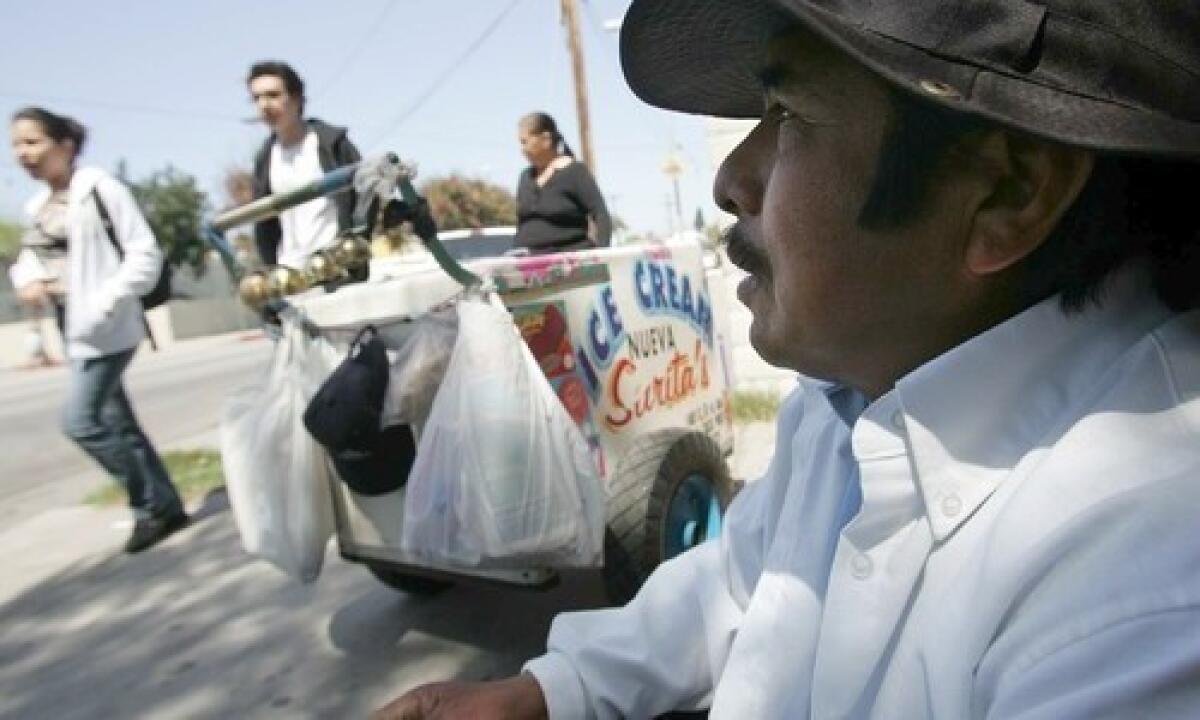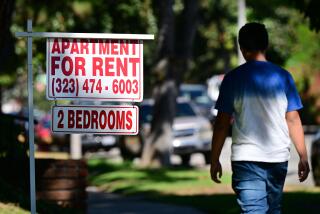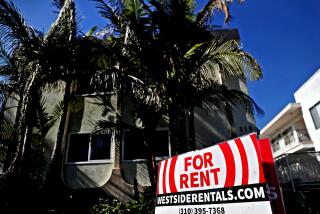Crime down in Los Angeles, other parts of Southern California

Crime in much of Los Angeles County and elsewhere in Southern California has dropped significantly so far this year, despite an economic meltdown that has pushed unemployment into double digits, imploded the housing market and shuttered countless businesses.
The decline flies in the face of predictions made by many crime experts that the region would probably experience substantial increases in property-related crimes and some types of violence as more people fell into financial hardship.
Overall in the city of Los Angeles, property crimes, such as burglary and auto theft, were down 6.4% over the same period last year, while violent crimes, including homicides and rapes, were down 4.9%. The only citywide increase was a 1.6% rise in robberies. Elsewhere in the county, the Sheriff’s Department reported a 10% drop in serious violent and property crimes in the areas it patrols.
Other large American cities similarly have bucked expectations this year. New York City posted a dramatic 14% drop in overall serious crimes, while Chicago and Houston also saw declines. Across the country, however, things are far more uneven. More than 100 large police departments have reported increases in property crimes or robberies this year, according to a survey by a police research group.
But few other major cities in the country have been hit harder by the economy than Los Angeles, where the unemployment rate has reached 12%. Police Chief William J. Bratton sounded his familiar refrain when asked to explain why crime has not increased. “Cops matter. Police count,” he said.
Bratton has long clashed with prominent criminologists who argue that police cannot counter larger societal forces -- such as the economy and drug epidemics -- that they contend drive crime rates.
Such theories have some evidence behind them. The last time the U.S. economy faltered over a prolonged period, Los Angeles fared badly. In 1991 and 1992, crime soared to levels roughly three times the current figures. At the time, the unemployment rate in the city hovered between 8% and 10% and the crack cocaine epidemic was in full swing. The population also had a higher percentage of young males, who are most likely to commit crimes. Crime rose significantly in other Southland areas at the time as well.
In light of the current statistics, which come after more than six straight years of declines in crime in the city under Bratton, several crime experts gave the chief his due. They attributed much of the LAPD’s success to the department’s well-established focus on tracking crime trends and efficiently deploying forces to problem spots, as well the LAPD’s ongoing efforts to work more closely with outside agencies and community and religious groups.
“I’m at a loss to point to anything other than the work the folks at the LAPD are doing in forging good community-based relationships,” said UC Irvine professor George Tita. “Smart, effective policing seems to be keeping a lid” on crime.
University of Missouri- St. Louis criminologist Richard Rosenfeld, president-elect of the American Society of Criminology, echoed Tita. He did not back away, however, from his belief that the demand for stolen goods will increase as more Angelenos look to save money by shopping at street markets and on the black market. If economic woes continue through the end of the year, it will become increasingly difficult for the LAPD to tamp down crime, Rosenfeld warned.
“It is still way too early to tell what’s coming,” he said. “Bratton is going to have a very tough six months ahead of him if things remain bad.”
The chief himself warned that the LAPD could struggle to keep crime down if the city’s looming budget shortfall forces cuts in the department’s rank and file through furloughs, forced retirements or layoffs.
Several residents of South Los Angeles and Watts, areas that traditionally endure the brunt of the city’s violence, said their experiences reflect the notion that, while crime is still a daily concern, things are safer.
Byron Gatewood, 47, has lived in neighborhoods near Compton and Vernon avenues south of downtown his whole life. “In the day-to-day life, I do feel like crime has dropped,” he said. “It hasn’t touched me like it usually do.”
Not all areas of the city have seen improvements this year. Neighborhoods patrolled by the LAPD’s Hollywood station, for example, have seen double-digit increases in property and violent crimes. The swaths of Los Angeles covered by the department’s Wilshire, Topanga and West L.A. stations have also seen increases in property crimes.
The city’s crime landscape was far different this time last year, when police officials were at pains to explain a spike in homicides. A series of high-profile killings added to the widely held impression that violence was spiraling out of control.
Insisting there was no evidence that the killings were linked or part of a trend, Bratton urged calm and said he expected the numbers to subside. The rash of bloodshed did abate and, by the end of 2008, the city had recorded a drop in killings over the previous year. If the current homicide rate holds, the city will post 280 slayings this year -- a low not seen for decades.
Other city and county agencies in the region also reported improvements in safety. Violent and property crimes in San Diego, Glendale and San Bernardino were down the first two months of the year over the same period in 2008, according to their departments’ figures. In Orange County, the Sheriff’s Department posted declines.
Times staff writers Richard Winton and Ari B. Bloomekatz contributed to this report.
More to Read
Start your day right
Sign up for Essential California for news, features and recommendations from the L.A. Times and beyond in your inbox six days a week.
You may occasionally receive promotional content from the Los Angeles Times.







